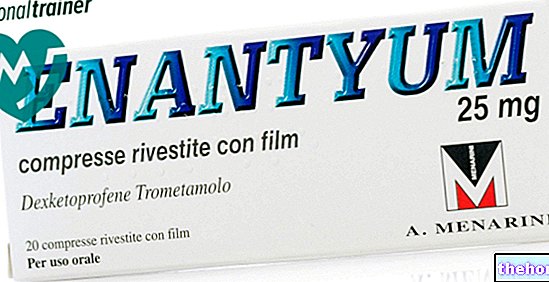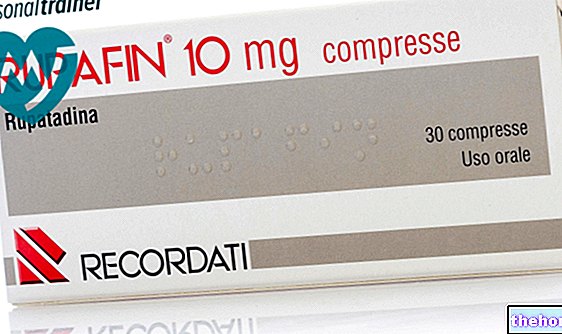Active ingredients: Ingenol mebutate
Picato 150 micrograms / gram gel
Picato package inserts are available for pack sizes:- Picato 150 micrograms / gram gel
- Picato 500 micrograms / gram gel
Indications Why is Picato used? What is it for?
Picato contains the active ingredient ingenol mebutate.
This medicine is used for the topical (on the skin) treatment of actinic keratosis, also called solar keratosis, in adults. Actinic keratosis presents with areas of wrinkled skin, which can occur in people who have been excessively exposed to the sun during their lifetime. Picato 150 micrograms / gram is used for the treatment of actinic keratosis on the face and scalp.
Contraindications When Picato should not be used
Do not use Picato
- If you are allergic to ingenol mebutate or any of the other ingredients of this medicine (listed in section 6).
Precautions for use What you need to know before taking Picato
- Avoid contact with eyes. In case of accidental contact, remove the gel by rinsing your eyes with plenty of water and seek medical attention as soon as possible.
- Do not swallow this medicine. Drink a large amount of water if you accidentally swallow this medicine and seek medical attention.
- Make sure your skin has healed from applying other treatments or surgery before using this medicine. Do not apply Picato to open wounds or broken skin.
- This medicine is for external use only, it should not be used near the eyes, inside the nostrils, inside the ears or on the lips.
- Avoid exposure to sunlight (including sunlamps and tanning beds) as much as possible.
- This medicine is intended to treat an area of 25 cm2 for three days. Follow this instruction strictly.
- Do not apply more gel than recommended by your doctor.
- Expect to have local skin reactions, such as redness and swelling, after treatment with this medicine (see section 4). Contact your doctor if these local skin reactions become severe.
Children and adolescents
Actinic keratosis does not occur in children, and this medicine should not be used in children and adolescents under 18 years of age.
Interactions Which drugs or foods can modify the effect of Picato
Tell your doctor or pharmacist if you are using, have recently used or should use any other medicines.
If you have previously used Picato or other similar medicines, please inform your doctor before starting treatment.
Warnings It is important to know that:
Pregnancy and breastfeeding
If you are pregnant, think you may be pregnant or are planning to have a baby, ask your doctor for advice before using this medicine. It is preferable to avoid the use of Picato during pregnancy.
While breastfeeding, avoid physical contact of the baby with the treated area for 6 hours after applying this medicine.
Driving and using machines
This medicine does not affect the ability to drive or use machines.
Dose, Method and Time of Administration How to use Picato: Posology
Always use this medicine exactly as your doctor has told you. If in doubt, consult your doctor or pharmacist.
If you have been prescribed two different strengths to treat two different areas you need to make sure you are using the strength prescribed in the correct area.
- Treatment for actinic keratosis on the face and scalp includes a tube of Picato 150 micrograms / g gel (containing 70 micrograms of ingenol mebutate) once a day for 3 days in a row.
Instructions for Use:
- Open a new tube each time you use this medicine. Remove the cap from the tube just before use.
- Press the tube letting the gel flow onto the finger of one hand.
- Apply the contents of one tube to an area of 25 cm2 (eg 5 cm x 5 cm).
- Gently spread the gel on the surface to be treated.
- Let the affected area dry for 15 minutes. Avoid touching the affected area for 6 hours after applying the medicine.
- Wash your hands with soap and water immediately after applying the gel, and also between applications if two different dosages have been prescribed for two different areas. If the treatment involves your hands, you should only wash the fingertip that you used to apply the gel.
- Do not apply the medicine immediately after taking a shower or less than 2 hours before bedtime.
- Do not wash the areas where you have applied the gel for at least 6 hours after application.
- Do not touch the treated surface and do not allow other people or animals to touch it for a period of 6 hours after applying the gel.
- Do not cover the treated area with occlusive or waterproof bandages after applying Picato.
- The full effect of Picato can be assessed approximately 8 weeks after treatment.
Overdose What to do if you have taken too much Picato
If you use more Picato than you should
Contact your doctor or pharmacist if you have used more Picato than you should.
If you forget to use Picato
Contact your doctor or pharmacist if you forget to use Picato.
If you have any further questions on the use of this medicine, ask your doctor or pharmacist.
Side Effects What are the side effects of Picato
Like all medicines, this medicine can cause side effects, although not everybody gets them.
After using this medicine, the skin you applied it to is likely to redden, peel and crust. These side effects most often occur within a day of application. Side effects may worsen for up to 1 week after stopping use of this medicine. These usually improve within 2 weeks of starting treatment.
It is possible to get a skin infection in the treatment area (it has been reported as a common side effect, which may affect up to 1 in 10 people, when treating the face and scalp).
Application site swelling is very common (has been reported in more than 1 in 10 people). Swelling at the application site on the face or scalp may affect the eye area. If your symptoms become more intense beyond the first week after you stop using this medicine, or if you have a leak of pus, you may have an infection and you should contact your doctor or pharmacist.
Side effects that occur most frequently when treating the face and scalp:
Very common side effects in the treatment area, may affect more than 1 in 10 people:
On the "treatment area:
- Some outer layers of the skin can wear out (erosion)
- Blisters (blisters, pustules)
- Swelling
- Peeling (exfoliation)
- Scabs
- Redness due to dilation of small blood vessels (erythema)
- Pain (including burning at the application site)
Side effects that occur most frequently in treating the trunk and extremities:
Very common side effects in the treatment area, may affect more than 1 in 10 people:
On the "treatment area:
- Some outer layers of the skin can wear out (erosion)
- Blisters (blisters, pustules)
- Swelling
- Peeling (exfoliation)
- Scabs
- Redness due to dilation of small blood vessels (erythema)
Other possible side effects in treating the face and scalp:
Common side effects, may affect up to 1 in 10 people:
- In the "treatment area:
- Itching
- Irritation
Other side effects:
- Swelling of the area around the eyes (periorbital edema)
- Swelling (edema) of the eyelid
- Headache
Uncommon side effects, may affect up to 1 in 100 people:
In the "treated area:
- Tingling or feeling of falling asleep (paraesthesia)
- Open ulcers
- Excretion (secretion) of fluids
Other side effects:
- Pain in the eye
Other possible side effects in treating the trunk and extremities:
Common side effects, may affect up to 1 in 10 people:
In the "treatment area:
- Itching
- Irritation
- Pain (including burning at the application site)
Uncommon side effects, may affect up to 1 in 100 people:
In the "treated area:
- Tingling or feeling of falling asleep (paraesthesia)
- Open ulcers
- Heat
Reporting of side effects
If you get any side effects, talk to your doctor or pharmacist. This includes any possible side effects not listed in this leaflet. You can also report side effects directly via the national reporting system listed in Appendix V. By reporting side effects you can help provide more information on the safety of this medicine.
Expiry and Retention
Keep this medicine out of the sight and reach of children.
Do not use this medicine after the expiry date which is stated on the carton after EXP and on the tube after EXP. The expiry date refers to the last day of that month.
Store in the refrigerator (2ºC - 8ºC).
For single use only. Once opened, the tubes must not be reused.
Do not throw any medicines via wastewater or household waste. Ask your pharmacist how to throw away medicines you no longer use. This will help protect the environment.
What Picato contains
- The active ingredient is ingenol mebutate. Each gram of gel contains 150 micrograms of ingenol mebutate. Each tube contains 70 micrograms of ingenol mebutate in 0.47 g of gel.
- The other ingredients are isopropyl alcohol, hydroxyethylcellulose, citric acid monohydrate, sodium citrate, benzyl alcohol, purified water.
Description of the appearance of Picato and contents of the pack
Picato 150 micrograms / g gel is clear and colorless and each pack contains 3 tubes with 0.47 g of gel each.
Source Package Leaflet: AIFA (Italian Medicines Agency). Content published in January 2016. The information present may not be up-to-date.
To have access to the most up-to-date version, it is advisable to access the AIFA (Italian Medicines Agency) website. Disclaimer and useful information.
01.0 NAME OF THE MEDICINAL PRODUCT
PICATO 150 MCG / GRAM GEL
▼ Medicinal product subject to additional monitoring. This will allow the rapid identification of new safety information. Healthcare professionals are asked to report any suspected adverse reactions. See section 4.8 for information on how to report adverse reactions.
02.0 QUALITATIVE AND QUANTITATIVE COMPOSITION
Each gram contains 150 mcg of ingenol mebutate.
Each tube contains 70 mcg of ingenol mebutate in 0.47 g of gel.
For the full list of excipients, see section 6.1.
03.0 PHARMACEUTICAL FORM
Gel.
Clear colorless gel.
04.0 CLINICAL INFORMATION
04.1 Therapeutic indications
Picato is indicated for the cutaneous treatment of non-hyperkeratotic, non-hypertrophic actinic keratosis in adults.
04.2 Posology and method of administration
Dosage
Actinic keratosis on the face and scalp in adults
A tube of Picato 150 mcg / g gel (containing 70 mcg of ingenol mebutate) must be applied once a day to the affected area for 3 consecutive days.
Pediatric population
There is no indication for a specific use of Picato in the pediatric population.
Elderly population
No dosage adjustment is required (see section 5.1).
Method of administration
The content of one tube covers an area of 25 cm2 (eg 5 cm x 5 cm). The contents of the tube must be applied to a treatment area of 25 cm2. The tube is for single use only and must be discarded after use (see section 6.6).
Squeeze the tube making the gel come out on the tip of a finger and distribute the gel evenly over the entire area to be treated, letting it dry for 15 minutes. The contents of a tube must be used for a treatment surface of 25 cm2.
For single use only.
For neck treatment: If more than half of the treatment area is located in the upper part of the neck, the posology for the face and scalp should be used. If more than half of the treatment area is located in the lower part of the neck. neck, the posology should be used for the trunk and extremities.
If an "area of the face or scalp and another" area of the trunk or extremities are treated simultaneously, patients should be advised to ensure that the appropriate dosages are used. Care should be taken not to apply 500mcg / g gel on the face or scalp as this could lead to a higher incidence of local skin responses.
Patients should be advised to always wash their hands with soap and water immediately after applying Picato and between topical applications if two different areas require different dosages. In case hands need to be treated, wash the fingertip only. used for the application of the gel.
Avoid washing and touching the treated area for a period of 6 hours after applying Picato. After this time, the treatment area can be washed using water and a mild soap.
Picato should not be applied immediately after taking a shower or less than 2 hours before going to bed.
The treated area should not be covered with occlusive bandages after applying Picato. The optimal therapeutic effect can be determined approximately 8 weeks after treatment.
A repeat course of Picato treatment can be administered if an incomplete response to the follow-up examination is found after 8 weeks or if the lesions that are healed on this examination recur in subsequent examinations.
Clinical data on treatment in immunocompromised patients are not available, but no systemic risks are expected as ingenol mebutate is not absorbed systemically.
04.3 Contraindications
Hypersensitivity to the active substance or to any of the excipients listed in section 6.1.
04.4 Special warnings and appropriate precautions for use
Eye exposure
Contact with eyes should be avoided. In case of accidental exposure, the eyes should be immediately rinsed with plenty of water and the patient should seek medical attention as soon as possible. Onset of eye disorders such as pain, eyelid edema and periorbital edema should be expected after accidental exposure of the eye to Picato (see section 4.8).
Ingestion
Picato should not be ingested. In case of accidental ingestion, the patient should drink plenty of water and consult a doctor.
General
It is recommended not to administer Picato before the skin has healed from previous treatment with any other medicine or surgical treatment. Picato should not be applied to open wounds or damaged skin where the skin barrier is compromised.
Picato should not be used near the eyes, inside the nostrils, inside the ears or on the lips.
Local skin responses
The manifestation of local skin responses such as erythema, flaking / peeling and crusting should be expected after skin application of Picato (see section 4.8). Localized skin reactions are transient and typically occur within 1 day of the onset of Picato. treatment, increasing in intensity up to 1 week after completion of treatment. Localized skin reactions generally resolve within 2 weeks of starting treatment when the facial and scalp areas are treated, while they resolve within 4 weeks of starting treatment when the trunk and extremities are treated. It may not be possible to make an "adequate assessment of the treatment effect" before resolution of local skin reactions.
Solar exposure
Studies were conducted to evaluate the effects of UV radiation on the skin after single and multiple applications of ingenol mebutate gel, 100 mcg / g. The ingenol mebutate gel showed no potential for photo-irritation or photo-allergic effects. However, due to the nature of the disease, excessive exposure to sunlight (including sunlamps and tanning beds) should be avoided or minimized.
Management of actinic keratosis
Lesions clinically atypical for actinic keratosis or suspected of malignancy should be analyzed with a biopsy to determine the appropriate treatment.
04.5 Interactions with other medicinal products and other forms of interaction
No interaction studies have been performed. Interactions with systemically absorbed medicinal products are considered unlikely as Picato is not absorbed systemically.
04.6 Pregnancy and lactation
Pregnancy
There are no data on the use of ingenol mebutate in pregnant women. Animal studies have shown mild embryo-fetal toxicity (see section 5.3). Risks to humans following skin treatment with ingenol mebutate are considered unlikely. , as Picato is not absorbed systemically. As a precautionary measure, it is preferable to avoid the use of Picato during pregnancy.
Feeding time
Picato is not expected to cause effects on newborns / infants as Picato is not absorbed systemically. The nursing woman should be advised that physical contact between her newborn / infant and the treated area should be avoided for a period of 6 hours after applying Picato.
Fertility
Fertility studies have not been performed with ingenol mebutate.
04.7 Effects on ability to drive and use machines
Picato has no or negligible influence on the ability to drive or use machines.
04.8 Undesirable effects
Summary of the safety profile
The most frequently reported adverse reactions are local skin reactions including erythema, flaking / peeling, crusting, swelling, blistering / pustular formation and erosion / ulceration at the application site of ingenol mebutate gel, see Table 1 for MedDRA terminology. . Following application of ingenol mebutate, most patients (> 95%) experienced one or more local skin reactions. Application site infection has been reported when treating the face and scalp.
Table of adverse reactions
Table 1 reports the exposure to Picato 150 mcg / g or 500 mcg / g in 499 patients with actinic keratosis treated in four vehicle-controlled phase III studies that enrolled a total of 1,002 patients. Patients received localized treatment ( an "area of 25 cm2) with Picato at concentrations of 150 mcg / g or 500 mcg / g or vehicle once a day for 3 or 2 consecutive days respectively.
The table below shows adverse reactions by MedDRA system organ class and anatomic location.
Frequencies have been defined according to the following convention: Very common (≥1 / 10); common (≥1 / 100,
*: Swelling at the application site on the face or scalp may affect the eye area
**: Including burning at the application site
Description of selected adverse reactions
The incidence of local skin reactions that occurred with> 1% incidence on "face / scalp" and "trunk / extremities", respectively, is as follows: application site erythema (94% and 92% ), application site exfoliation (85% and 90%), application site scabs (80% and 74%), application site swelling (79% and 64%), application site blisters (13% and 20%), application site pustules (43% and 23%) and application site erosion (31% and 25%).
Severe local skin responses occurred with an incidence of 29% on the face and scalp and with a "incidence of 17% on the trunk and extremities. The incidence of severe local skin reactions that occurred with an" incidence> 1% in both "face / scalp" and "trunk / extremities", respectively, is as follows: application site erythema (24% and 15%), application site exfoliation (9% and 8%), scabs at the application site (6% and 4%), swelling at the application site (5% and 3%) and pustules at the application site (5% and 1%).
Long-term follow-up
A total of 198 patients with complete wound healing on day 57 (184 treated with Picato and 14 treated with vehicle) were followed up for an additional 12 months.In another study, 329 patients who were initially treated with cryotherapy on the face / scalp, after three weeks were randomized to treatment with Picato 150 mcg / g (n = 158) or vehicle (n = 150) for 3 days. in the same area. 149 patients in the Picato group and 140 patients in the vehicle group were followed for 12 months. In a subsequent study 450 patients were initially treated with Picato 150 mcg / g, of these 134 patients were randomized to a second course of treatment with Picato 150 mcg / g and the patients were followed up for up to 12 months after the first treatment. These results did not change the safety profile of Picato (see section 5.1).
Reporting of suspected adverse reactions
Reporting of suspected adverse reactions occurring after authorization of the medicinal product is important as it allows continuous monitoring of the benefit / risk balance of the medicinal product. Healthcare professionals are asked to report any suspected adverse reactions via the national reporting system. in "Annex V.
04.9 Overdose
An overdose of Picato could result in an "increased incidence of local skin responses. Management of overdose should consist of treatment of clinical symptoms.
05.0 PHARMACOLOGICAL PROPERTIES
05.1 Pharmacodynamic properties
Pharmacotherapeutic group: antibiotics and chemotherapeutic agents for dermatological use, other chemotherapeutic agents.
ATC code: D06BX02.
Mechanism of action
The mechanism of action of ingenol mebutate for use in actinic keratosis has yet to be fully characterized. In vivo and in vitro models have shown a dual mechanism of action of the effects of ingenol mebutate: 1) induction of cell death localized to lesions 2) promotion of an inflammatory response characterized by local production of proinflammatory cytokines and chemokines and cell infiltration immunocompetent.
Pharmacodynamic effects
The results of two clinical studies on the biological effects of ingenol mebutate have shown that topical administration induces epidermal necrosis and deep inflammatory response both in the epidermis and in the upper part of the dermis of the treated skin, with a predominance of infiltration of T cells, neutrophils and macrophages. Necrosis has rarely been observed in the dermis.
The gene expression profiles of skin biopsies on the treated areas suggest inflammatory responses and responses to skin lesions, compatible with histological evaluations.
The non-invasive examination by confocal reflectance microscopy of the treated skin showed that the skin changes induced by ingenol mebutate were reversible, with almost complete normalization of all the parameters measured after 57 days from treatment, a data also supported by clinical and animal studies.
Clinical efficacy and safety
The efficacy and safety of Picato 150 mcg / g administered to the face and scalp for 3 consecutive days were studied in two double-blind, vehicle-controlled clinical trials, involving a total of 547 adult patients.
Similarly, the efficacy and safety of Picato 500 mcg / g administered to the trunk and extremities for 2 consecutive days were studied in two double-blind, vehicle-controlled clinical trials involving a total of 458 adult patients. Patients continued the study for an 8-week follow-up period, during which they returned for clinical follow-up and safety monitoring. Efficacy, measured as complete and partial clinical cure rate as well as median percentage reduction, was assessed. at day 57 (see Table 2).
Patients had 4 to 8 clinically typical, visible, separate, non-hyperkeratotic, non-hypertrophic actinic keratosis lesions on the face or scalp, or trunk or extremities in a contiguous treatment area of 25 cm2. At each scheduled dosing day, the gel under examination was applied to the entire area to be treated.
The compliance rate was high and 98% of patients completed these studies.
The study patients ranged in age from 34 to 89 years (mean age of 64 and 66 years, for the two dosages, respectively), and 94% had skin type I, II or III according to the Fitzpatrick classification.
At day 57, patients treated with Picato had higher complete and partial clinical cure rates than patients treated with vehicle gel (p
a Clinical complete cure rate refers to the percentage of patients without clinically visible actinic keratosis lesions in the treatment area.
b The partial clinical cure rate refers to the percentage of patients in whom at least 75% of the number of lesions have disappearedinitials of actinic keratosis.
c Median percentage (%) reduction in actinic keratosis lesions compared to basal.
d p
The level of effectiveness varied between individual anatomical locations. Within each location, complete and partial cure rates were higher in the ingenol mebutate group compared to the vehicle group (see Tables 3 and 4).
a Other includes shoulder, back, leg.
The safety of Picato 150 mcg / g treatment for 3 days or Picato 500 mcg / g treatment for 2 days was evaluated up to day 57, most of the reported adverse reactions and local skin responses were mild in intensity. to moderate and all resolved without sequelae.
Statistically significant differences in patient-reported outcomes were observed in favor of patients treated with Picato versus patients treated with vehicle gel. In the groups treated with ingenol mebutate, higher scores relative to the mean overall patient satisfaction were recorded compared to the groups treated with the vehicle (p
Long-term efficacy
Three long-term, 1-year follow-up prospective observational studies were performed to evaluate the persistence of efficacy in the case of recurrence of actinic keratosis lesions in the treated area, and safety in patients who received treatment with Picato. . One study included patients treated with Picato 150 mcg / g on the face or scalp for 3 days, while two studies included patients treated with Picato 500 mcg / g on the trunk or extremities for 2 days. Only patients who had achieved complete clinical recovery in the treated area at the end of the phase III studies (day 57) were included in the long-term follow-up. Patients were followed up every 3 months for 12 months (see Table 5).
a The relapse rate is the Kaplan-Meier (KM) estimate at the date of the planned study visit expressed as a percentage (95% CI). Relapse was defined as the presence of any lesion identified by actinic keratosis in the previously treated area in patients who had achieved complete clinical recovery at day 57 in previous phase III studies.
b The lesion-based recurrence rate for each patient is defined as the ratio of the number of actinic keratosis lesions at 12 months to the number of lesions at basal in previous phase III studies.
c Of these, 38 subjects were previously treated in a vehicle-controlled phase III study, and 38 subjects were previously treated in an uncontrolled phase III study.
Risk of progression to squamous cell carcinoma
At the conclusion of the study (day 57), the percentage of squamous cell carcinoma (SCC) reported in the treatment area was comparable in patients treated with ingenol mebutate gel (0.3%, 3 of 1,165 patients) and in those treated with the vehicle (0.3%, 2 out of 632 patients) in the actinic keratosis clinical studies conducted with ingenol mebutate gel.
In the three prospective, long-term observational studies with 1-year follow-up, no patients (0 of 184 patients previously treated with ingenol mebutate) reported SCC in the treatment area.
Experience with more than one course of treatment
In a double-blind, vehicle-controlled study, up to 2 courses of treatment with Picato 150 mcg / g were administered to 450 patients with 4-8 actinic keratoses in a "treatment area of 25 cm2 on the face or scalp." Patients, in whom a first course of treatment did not lead to complete healing of all actinic keratoses in the treatment area after 8 weeks, were randomized to an additional course of Picato or vehicle treatment. Patients whose first course of treatment resulted in complete recovery were evaluated at 26 and 44 weeks and randomized to a second course of treatment if they had relapsed in the field. In all patients, efficacy was assessed 8 weeks after randomization. The first course of treatment, administered openly, resulted in a complete cure rate of 62% (277/450). The results of the second course of treatment randomized and blinded treatment are presented in Table 6.
a Complete cure rate is defined as the proportion of patients with no (zero) clinically visible actinic keratosis lesions in the treatment area.
b Cochran-Mantel-Haenszel test with Picato gel 150 mcg / g versus correct vehicle for anatomical location (face / scalp) and country.
c Patients in whom the first course of treatment did not lead to complete healing of all actinic keratoses in the treatment area.
d Patients whose first treatment cycle resulted in complete recovery and who had a relapse in the treatment area at week 26 or week 44.
Actinic keratosis of the face and scalp, sequential use after cryotherapy
In a two-arm study, 329 adult patients with actinic keratosis on the face or scalp were randomized to treatment with Picato 150 mcg / g gel or vehicle 3 weeks after cryotherapy on all visible lesions in the treatment area. Patients with 4 to 8 clinically typical, visible, distinct as non-hypertrophic and non-hyperkeratotic actinic keratosis lesions within a contiguous treatment area of 25 cm2 were enrolled in the study.
Eleven weeks after baseline, which corresponds to 8 weeks after Picato or vehicle treatment, the complete cure rate was 61% in those patients randomized to Picato gel and 49% in those randomized to vehicle. At 12 months, the complete cure rates in these groups were 31% and 19%, respectively. The percentage reduction in the number of actinic keratoses in the Picato group was 83% at 11 weeks and 57% at 12 months, while in the vehicle group it was 78% at 11 weeks and 42% at 12 months. The mean number of actinic keratoses in the Picato group was 5.7 at baseline, 0.8 at week 11 and 0.9 at 12 months compared to 5.8 at baseline, 1.0 at week 11 and 1.2 at 12 months in the group with vehicle.
The safety results of the study were comparable to the safety profile of Picato gel 150 mcg / g alone.
Experience with the treatment of larger surfaces
In a double-blind, vehicle-controlled study carried out to evaluate systemic exposure, Picato 500 mcg / g, in the amount of 4 tubes, was applied daily to a contiguous treatment area of 100 cm2 size for 2 days. consecutive. The results showed no systemic absorption.
Picato 500 mcg / g was well tolerated when applied to a contiguous treatment area measuring 100 cm2 on the trunk and extremities.
Pediatric population
The European Medicines Agency has waived the obligation to submit the results of studies with Picato in all subsets of the pediatric population in the treatment of actinic keratosis (see section 4.2 for information on pediatric use).
Elderly population
Of the 1,165 patients treated with Picato in actinic keratosis clinical trials conducted with ingenol mebutate gel, 656 patients (56%) were "65 years of age and older, while 241 patients (21%) were" of age 65 or older. 75 years old. No overall differences in safety and efficacy were observed between younger patients and older patients.
05.2 "Pharmacokinetic properties
The systemic pharmacokinetic profile of ingenol mebutate and its metabolites has not been defined in humans due to the absence of quantifiable blood levels after cutaneous administration.
No systemic absorption was detected either at or above the minimum detection limit (0.1 ng / ml) when Picato 500 mcg / g, in the quantity of 4 tubes, was applied for the treatment of actinic keratosis on a "area of 100 cm2 on the dorsal forearm of patients once a day for 2 consecutive days.
The results of in vitro studies show that ingenol mebutate does not inhibit or induce human cytochrome P450 isoforms.
05.3 Preclinical safety data
Non-clinical data reveal no special hazard for humans based on conventional studies of safety pharmacology, repeated dose toxicity and genotoxicity.
Preclinical safety studies show that topical administration of ingenol mebutate gel is well tolerated, with possible cases of reversible skin irritation and a negligible risk of systemic toxicity under the recommended conditions of use.
In the rat, ingenol mebutate was not associated with effects on fetal development at intravenous doses up to 5 μg / kg / day (30 μg / m2 / day). In the rabbit, no major abnormalities were observed. o Minor fetal variants were observed in fetuses from mothers treated at doses of 1 mcg / kg / day (12 mcg / m2 / day).
06.0 PHARMACEUTICAL INFORMATION
06.1 Excipients
Isopropyl alcohol
Hydroxyethylcellulose
Citric acid monohydrate
Sodium citrate
Benzyl alcohol
Purified water
06.2 Incompatibility
Not relevant.
06.3 Period of validity
2 years.
06.4 Special precautions for storage
Store in a refrigerator (2 ° C - 8 ° C).
The tubes must be discarded after the first opening.
06.5 Nature of the immediate packaging and contents of the package
Single-dose laminated tubes with internal layer in High Density Polyethylene (HDPE) and aluminum as a barrier layer. HDPE caps.
Picato 150 mcg / g gel is available in a pack containing 3 tubes with 0.47 g of gel each.
06.6 Instructions for use and handling
Unused medicine and waste derived from this medicine must be disposed of in accordance with local regulations.
07.0 MARKETING AUTHORIZATION HOLDER
LEO Pharma A / S
Industriparken 55
2750 Ballerup
08.0 MARKETING AUTHORIZATION NUMBER
EU / 1/12/796/001
042513010
09.0 DATE OF FIRST AUTHORIZATION OR RENEWAL OF THE AUTHORIZATION
Date of first authorization: 15 November 2012
10.0 DATE OF REVISION OF THE TEXT
D.CCE July 2015




























